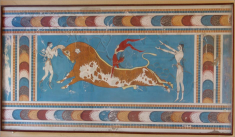Speaker
Description
High $p_T$ direct photons produced in initial hard scattering are not affected by the colored medium formed in heavy ion collisions. This has been observed in large-on-large ion collisions, where, in contrast, jets and final state hadrons show energy loss, measured via the nuclear modification factor that compares the observed yields to the expected yield from p+p scaled by the number of binary nucleon-nucleon collisions. The energy loss correlates with the size of the medium, i.e. collision centrality, which in turn is characterized by the event activity in heavy-ion collisions, based on the fact that even in the presence of a hard collision most nucleon-nucleon interactions remain soft, assuring the proportionality between centrality (impact parameter) and soft particle production. Surprisingly, even in small systems, e.g. $p$+Au or $d$+Au collisions, high-transverse-momentum neutral hadrons appear to be suppressed in events with large event activity, although one would expect that the projectile proton, once participated in a hard collision, could produce only reduced number of soft particles. Even more puzzling, the nuclear modification factor appears to be enhanced in peripheral collisions, not observed in large colliding systems.
In this talk, by comparing the prompt photon and $\pi^0$ production measured by PHENIX in $d$+Au collisions at $\sqrt{s_{NN}} = 200$ GeV, and reporting on the status of the respective $p$+Au analysis, we will elaborate the reasons why the apparent centrality dependence is more likely to be a pT-dependent deviation from the proportionality of event activity and centrality in the underlying standard Glauber model calculations rather than a nuclear modification of hard scattering processes.
Details
N/A
| Is this abstract from experiment? | Yes |
|---|---|
| Name of experiment and experimental site | PHENIX https://www.phenix.bnl.gov/ |
| Is the speaker for that presentation defined? | No |
| Internet talk | No |
